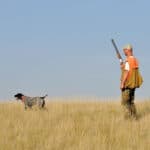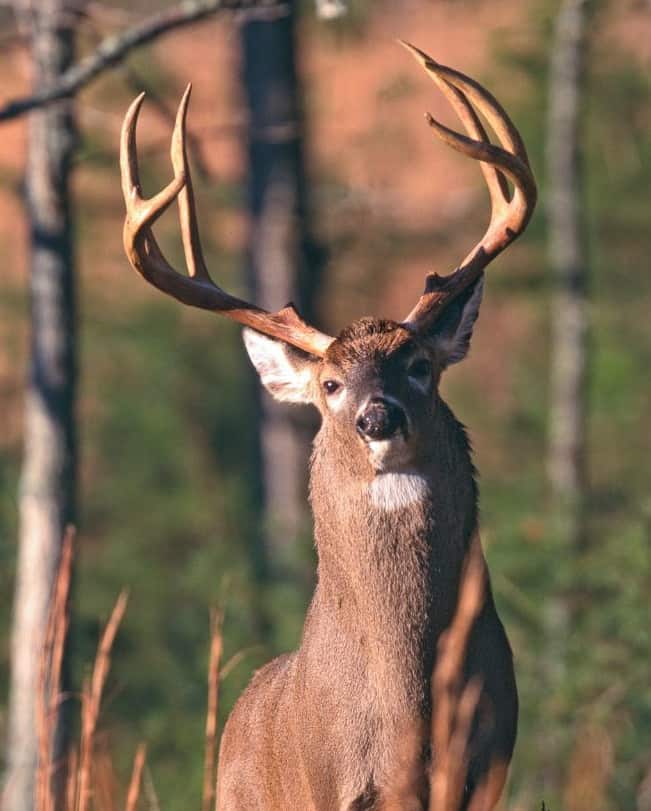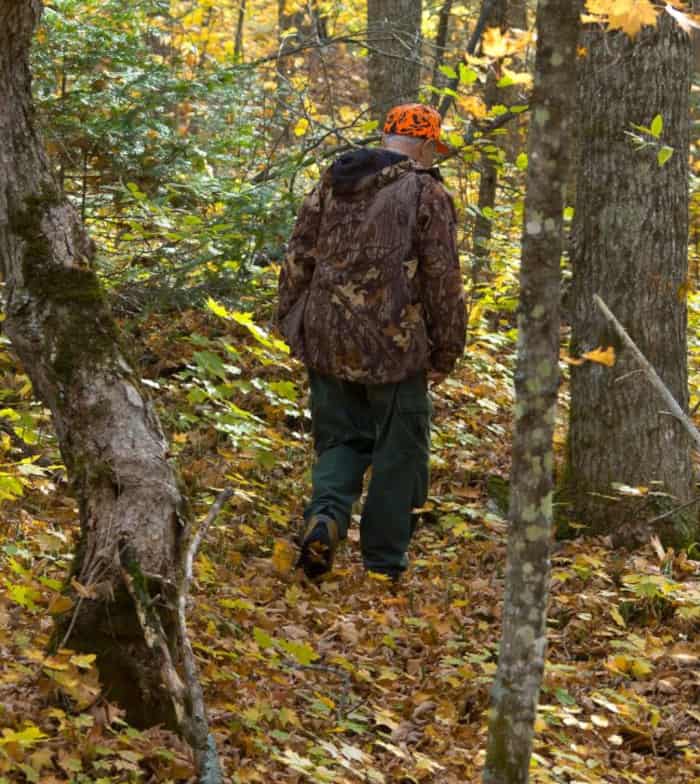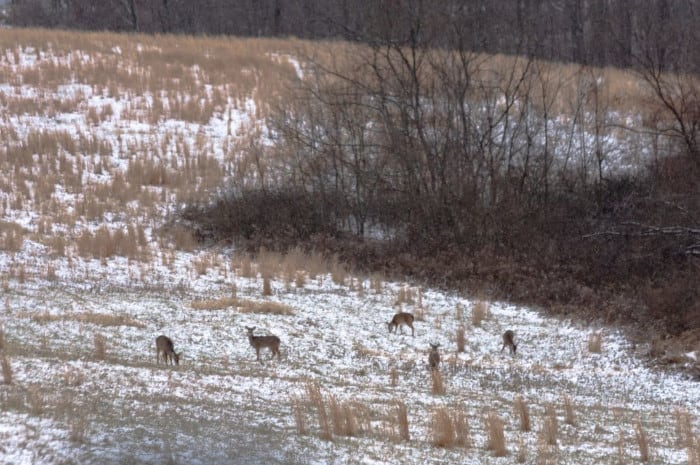Deer populations are an essential factor in assessing the overall health of the herd. As such, it’s beneficial for deer hunters and land managers to have a good understanding of deer population dynamics. One critical tool for analyzing these populations is the buck to doe ratio. In this post, I’ll explore what this ratio means, how it can be used to assess deer populations, and why it matters for managing and preserving a healthy herd of deer.
The buck-to-doe ratio is simply a comparison between male (buck) and female (doe) deer in any given area at one point in time. It’s often expressed or written as either “bucks per doe” or “does per buck.” This ratio can tell us a lot about the size, success rate, sex-ratio bias, age, and overall health of a deer population.
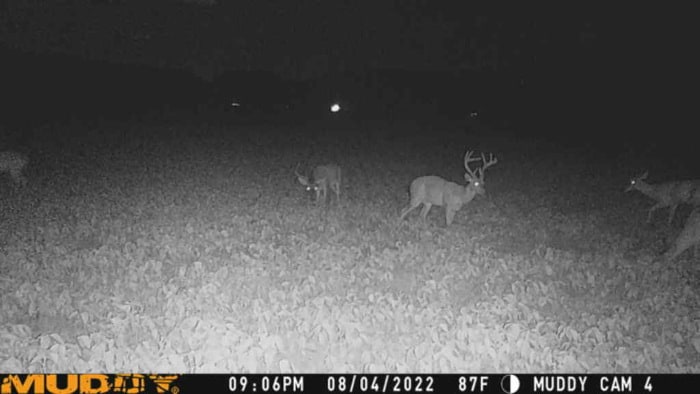
Before I get too far along in this post, let’s start by defining the terms “bucks” and “does.”
Defining A Buck
A buck is an adult male deer, typically identified by the presence of antlers. Most deer management guidelines classify a male deer as an adult at the 1-year mark.
Buck harvest data can provide insight into the current state of buck populations; for example, it can help determine if there are enough bucks present to maintain a healthy breeding population. However, it’s important to note that not all adult bucks will have full-grown antlers; immature males should still be counted in a deer census. Therefore, when studying buck populations, it’s essential to consider both the number of mature bucks and those that have yet to reach maturity.
The next step in this discussion is defining a doe.
Defining A Doe
A doe is a term used to describe a female deer, an essential member of any deer population. However, it’s important to note that the lack of antlers does not automatically label a deer as a doe, as immature male deer may not have antlers during the first year of their life.
The term “adult doe” refers specifically to adult females that have reached sexual maturity and are at least 1.5 years old. It’s important to understand this because doe harvest rates often differ between age groups due to size, weight, or antlerless permit restrictions (with those parameters varying by state). Therefore, the ratio of bucks-to-does within a given area has significant implications for the health of both the buck and doe population, especially when skewed towards either gender.
Why Does The Buck To Doe Ratio Matter?
The buck to doe ratio significantly impacts deer populations and local herds’ overall health. When it comes to quality deer management, maintaining balanced sex ratios is essential for ensuring healthy fawn recruitment rates and positive population growth. As such, understanding how this ratio affects the herd can help inform hunters, landowners, and land managers’ decisions when managing deer populations in their area.
For example: if there are too many bucks relative to does, then competition among males will be fiercer as they compete for reproductive rights with limited resources available from fewer females. Since bucks don’t really feed much during the mating season, this increased competition from an overabundance of males leads to bucks being in a weakened state. This weakened state leads to higher mortality rates amongst bucks due to illness, harsh winters, and lack of sustainable food sources.
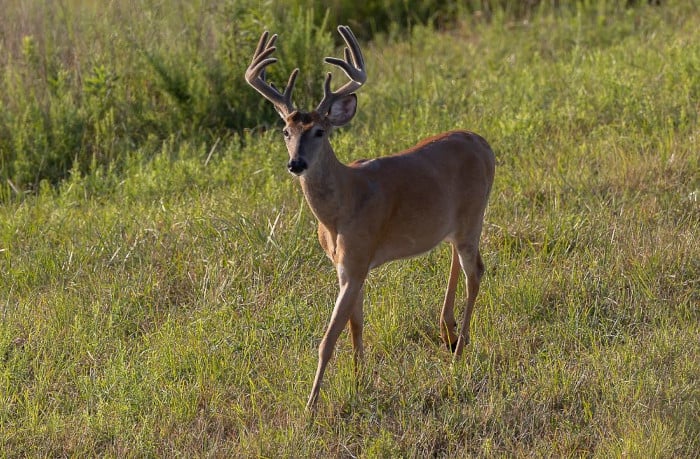
On the other hand, if there aren’t enough bucks in comparison to does, then reproduction may suffer due to a lack of breeding partners, resulting in lower fawn production rates and ultimately leading to a decrease in total deer population numbers over time.
Additionally, too few adult female deer may mean that young fawns lack adequate nutrition or protection from predation due to reduced maternal care or supervision.
In order to ensure optimum health and productivity of local deer herds, proper maintenance of the buck-to-doe ratio is vital. The right balance between sexes allows both adults and juveniles to thrive while also providing enough breeding opportunities so that the population continues growing steadily year after year.
What’s The Ideal Doe To Buck Ratio
Ah, the million-dollar question: What is the ideal buck to doe ratio for a deer herd?
Before we get into answering that specific question, let’s take a look at why the doe-to-buck ratio matters.
Here’s a breakdown of why this matters:
- Sex ratios are essential in assessing the current status of any given species population, including deer herds.
- Skewed sex ratios (too many bucks or too many does) can lead to poor reproductive outcomes, leading to fewer fawns being born each year and thus impacting overall population numbers.
- Knowing the optimal buck to doe ratio helps ensure that there are enough animals available for both hunting and conservation purposes.
While deer management experts have varying opinions on the “ideal” buck-to-doe ratio, most agree that the ideal ratio ranges from 1:1 to 1:5. To further explain, in a one-to-one ratio, there will be one buck for each doe, and in a one-to-five-ratio, there will be one buck for every five does.
In my opinion and experience, the larger ratios, like 1:4 and 1:5, are harder to maintain because they require a larger buck and doe harvest annually. When possible, I prefer to stay in the 1:1 to 1:3 range. In my years of trying to manage hunting properties by QDM guidelines, I’ve never been able to maintain a ratio of 1:4 or up comfortably.
I find it much easier to maintain a 1:1 to 1:3 ratio, and those ratios are sustainable over time, with a focus on antlerless deer harvests.
Here’s a working example of a buck to doe ratio approach:
Say you manage a 500-acre tract of land, and this land typically supports one deer for every 10 acres. The number of deer that a property supports per acre is commonly called the carrying capacity or deer capacity per acre. So, a 500-acre tract would carry 50 deer (500 / 10). Depending on your desired ratio, the numbers would break down as follows:
- 1:1 = 25 bucks & 25 does
- 1:2 = 20 bucks & 30 does
- 1:3 = 16 bucks & 34 does
- 1:4 = 10 bucks & 40 does
Let’s use the 1:4 ratio and work off that number.
If you factor in an estimated fawn survival rate of 50% for the 40 does (assuming all the mature does give birth), that equates to 20 fawns surviving to adulthood.
In that scenario, as a land manager, you would need to harvest or remove 20 deer during the hunting season. To stay in line with the desired 1:4 ratio, you would need to remove ten bucks and ten does.
If you decided to move to a 1:2 ratio, then you only need to harvest eight bucks and eight does under the scenario above. This 1:2 ratio may be advantageous for a hunter as they only need to remove ½ the number of deer compared to a 1:4 situation.
Typically speaking, the higher ratios lead to a more significant number of bucks on a property but sacrifices a focus on quality mature bucks. Conversely, the lower ratios lead to fewer overall deer but place an emphasis on developing larger, more mature bucks.
Keep in mind that these numbers are just example estimates and don’t take into consideration factors that may be specific to your situation.
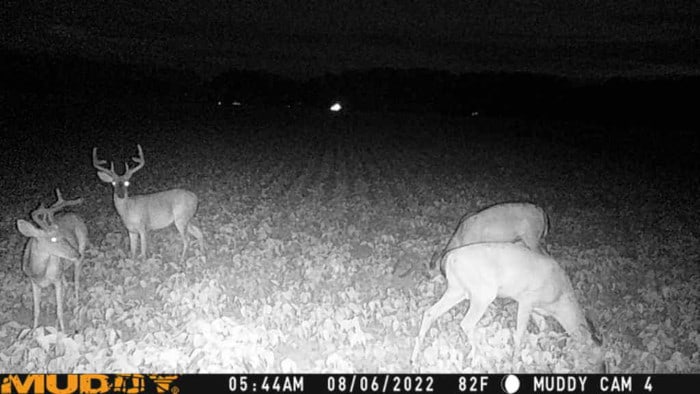
Is a 1:1 Buck to Doe Ratio the Best?
While most deer biologists recommend a 1:1 or 1:2 ratio for optimal growth, there may be some situations where a 1:1 balance is not ideal for a property and could actually hurt the deer population in the long run.
Here are some examples of those scenarios:
Transient Deer Herd
If you manage a property with a highly transient deer herd; then the 1:1 ratio may not be ideal. A transient deer population is one that routinely leaves the property that you manage or own. Transient deer can cause issues with inaccurate deer counts, which, in turn, can create problems with doe-to-buck or buck-to-doe ratios.
If your deer count or deer census is substantially off or varies significantly from one count to the next, then applying a one-to-one ratio may reduce the population too far or not enough.
Here’s a real-life example of how a transient deer herd can throw your deer count off:
I used to manage a 200-acre tract of hunting land that was a nice mix of hardwood trees, pine trees, and open fields. The property featured a diverse amount of natural food sources for the deer year around, and I supplemented the food with a few deer feeders during the winter.
The property next to this one was a 400-acre tract that had been logged for timber, and then replanted with pine trees. It was leased by a hunt club and did not have a great deal of natural food sources. As such, the club members aggressively used deer feeders as a supplemental feeding source, but only during the winter months.
During the spring, summer, and fall, the bulk of the deer population stayed in or around the property that I managed. However, during the winter, they transitioned over to the hunting club property because they had 25 or so deer feeders, dispensing food twice a day, deployed around the property.
So, my whitetail count numbers were higher in the summer and fall but lower in the winter. If I only did one deer count a year, and it happened to be during the winter months, the number of deer on my property would be incorrect from a seasonal standpoint. Taking any action to correct or adjust the deer sex ratio based on those incorrect numbers could have led to herd health problems.
Deer Disease Outbreak
The second potential problem with keeping a 1:1 deer ratio involves an outbreak of disease or illness that kills off a large number of deer within the herd.
The two most common diseases that could potentially create this situation are:
- Chronic Wasting Disease (Commonly called CWD)
- Epizootic Hemorrhagic Disease (Commonly called EHD)
An outbreak of either of these diseases can potentially cause a significant reduction in the deer population locally. If you use a 1:1 deer sex ratio for management, an outbreak can reduce the deer population well under that ratio, which may impact the fawn birthing cycle for the next few years.
However, if you are operating on a larger 1:2 or 1:3 ratio, the impact of losing several deer to disease is less noticeable within the herd. In addition, those larger ratio herds will rebound from the losses quicker compared to a 1:1 ratio herd.
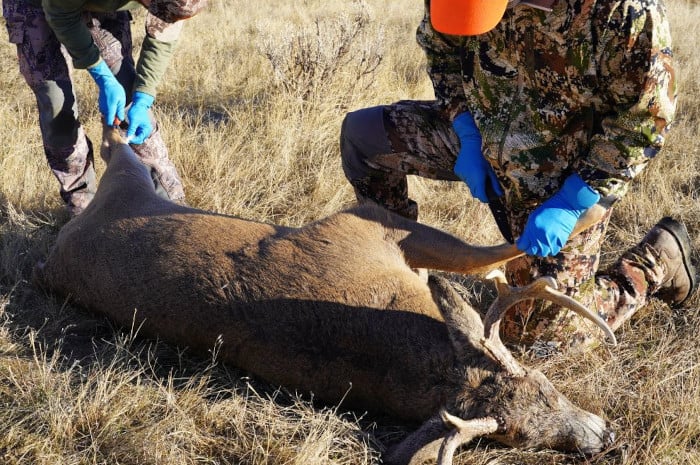
How To Calculate The Deer Ratio
There are several different methods of counting the number of deer on a specific tract of land, but my preferred method is a trail camera survey.
I prefer this method as I already utilize trail cameras at feeders, so, in my case, half the work is already completed. Here’s how I like to do my surveys, but keep in mind that this is just my preferred way, and several different methods work just as well.
I try to focus on doing surveys in late August, as most bucks have developed antlers, which makes it easier for identification purposes. Also, I set my cameras to take pictures every three minutes, which saves space on the memory card versus having it go off every 60 seconds.
I start having the feeders dispense feed (corn is my go-to for surveys) and set the feeder to go off once daily (which also saves on battery life). I let this continue for a week so that the deer get accustomed to visiting the feeder. In a perfect world, I try to run at least one feeder for every 100 acres, although that may not always be possible.
After completing the first week, I start the survey and let it run for fourteen days. Some deer biologists recommend a week, but I prefer to go two full weeks as it gives me more deer images to work with.
At the end of the 14 days, I pull all the memory cards and start analyzing the data. I create folders on my computer and give each folder a buck number. Then, as a buck is identified, I place all his images that are gathered over the two weeks into a single folder. I’ll do the same for does, but only if they have a unique mark or are easily identified.
Over the years, I’ve tried several different computations to determine the buck to doe ratio, but I prefer this one from Mossy Oak:
Total pictures of bucks = X
Total pictures of unique bucks = Y
Total pictures of adult does = Z (not fawns)
Doe multiplier = B
Y÷ X = A (Percentage of Unique Bucks)
A x Z = Number of Does
Y ÷ B = Buck to Doe Ratio
This is reprinted directly from the Mossy Oak site, and more information about this formula can be seen here: https://mossyoakgamekeeper.com/wildlife-conservation/wildlife-habitat-management/buck-to-doe-ratio/
Methods To Reduce The Doe Population
Once the buck to doe ratio is calculated, understanding how it impacts the deer population becomes clearer. There are two primary methods to reduce a deer population:
Antlerless deer harvest
An antlerless deer harvest refers to the harvesting of young bucks or antlerless bucks as part of a whitetail management program. My preferred approach is to let a new hunter or young hunter harvest one of these deer under supervision. This approach is beneficial for both the land manager or property owner, and helps introduce the next generation of hunters to the sport.
Doe harvest
With this approach, only does are harvested or culled to get the doe population down to a target number.
I typically do these doe harvests under the following conditions:
- Allow hunters who are explicitly seeking does or are more interested in meat versus antlers to cull the does.
- As previously mentioned, allow a young hunter or new hunter to come in and harvest a doe as their first deer.
In summary, effective management strategies such as antlerless deer harvest, whitetail management practices, and limited doe harvest all play an important role in managing deer populations efficiently and sustainably.
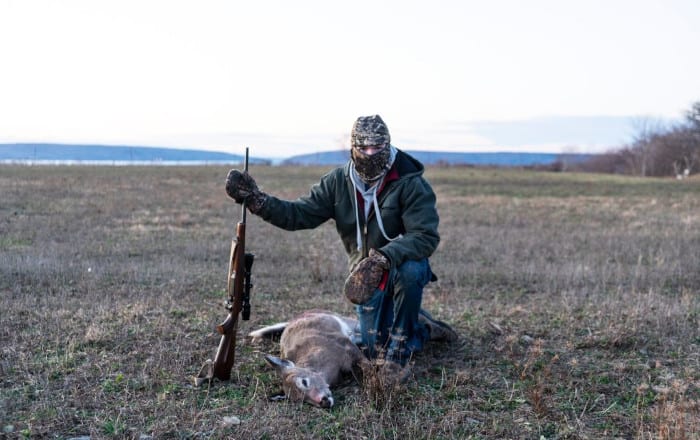
FAQS
Here are some frequently asked questions that I routinely see dealing with buck-to-doe ratios:
Is the buck to doe ratio really that important?
The answer depends on one’s approach toward the desired level of deer management on one’s hunting property. For example, if you happened to be a hunter who only hunts a few times a year, has plenty of deer on their hunting property, and isn’t concerned about antler size; then the buck-to-doe ratio may not be something to be concerned with.
However, if you’re a hunter who is focused on harvesting mature deer and antler size or development is your primary goal, then the doe-to-buck or buck-to-doe correlation is definitely worth reviewing.
What is the best buck to doe ratio?
If you posed this question to ten different land owners or land managers following QDM principles, there’s a very good chance you won’t receive a universal answer. I don’t believe that a universal “best” ratio exists because so many variables come into play when evaluating the health of a deer population. That being said, most deer biologists advocate a buck to doe ratio ranging from 1:1 to 1:4. I find that 1:1 and 1:2 seem to provide the best results for the properties I manage.
How should a hunter or landowner determine which does to cull to maintain a proper buck to doe correlation?
When culling does for whitetail management, I try to even apply the culling to both older and younger does. So, for example, if I need to cull eight does off a property, I’ll target four more aged does who are in the later stages of life and four younger does who may have only given birth for one season. With this approach, I’m trying to focus on keeping the middle-aged does who are in their reproductive prime.
My research and experience have shown me that there is no one-size fits all solution when it comes to maintaining a balanced buck to doe ratio– every region requires its own unique strategies. But what I’ve found is that by following specific guidelines, such as creating suitable habitats for bucks, implementing hunting regulations, and monitoring birth rates, we can significantly improve the quality of mature bucks on a tract of land.

Born and raised in Indiana, Brantley spent his youth chasing deer and turkey and, along the way, developed a passion for bowhunting. Although he still enjoys other types of hunting, his true passion is bowhunting, and he has or will author most all the bowhunting content on this site. Outside of work, Brantley is married and the father of two beautiful little girls. Brantley has worked in the hunting industry, with an emphasis on archery and bowhunting, for more than ten years.

